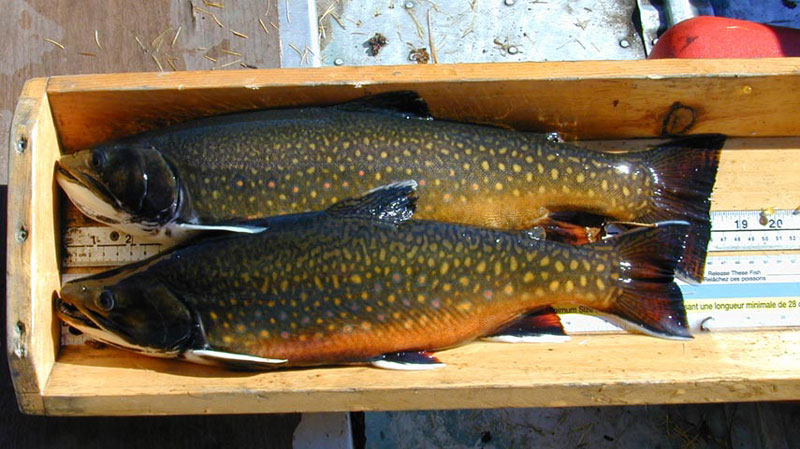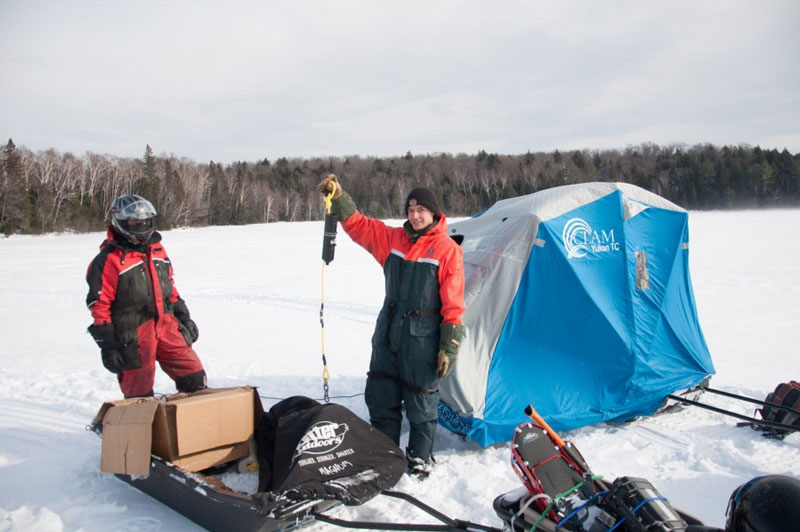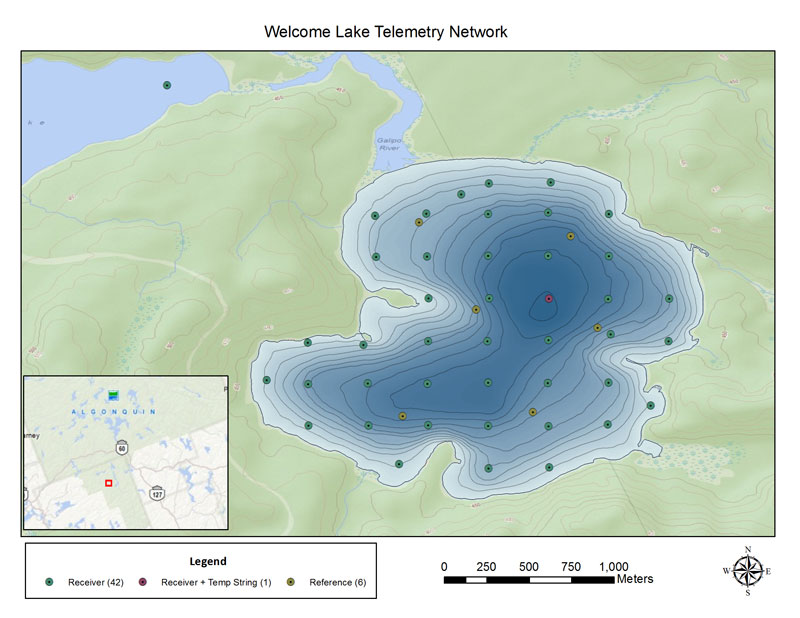Events Calendar
Current Weather
Issued: May 27, 2014
Brook Trout Research in Welcome Lake
 |
| Algonquin Park has one of the world's highest concentration of naturally reproducing Brook Trout lakes. |
Did you ever wonder where Brook Trout live in a lake? Many anglers have asked this question when visiting one of the many Brook Trout lakes found across Algonquin Park. For years now, the reputation of the park for Brook Trout fishing is legendary. To sustain this important fishery and improve our monitoring science for Brook Trout, the Harkness Laboratory of Fisheries Research and the Algonquin Fisheries Assessment Unit have teamed up to answer that question. Anglers have their methods for determining where Brook Trout live but the fisheries science crews in the park have a whole new way of getting an answer.
 |
| Harkness fisheries staff installing the acoustic array buoys in January 2014. |
We’re using an acoustic array system. Built in Canada, an acoustic array is a system of listening receivers situated below the lake surface that record the pinging of tags surgically inserted into fish. When the receivers are located in a set pattern in a lake the 3-dimensional position of each fish can be estimated based on the distance of a fish to each of several receivers. Sound travels well in water so millisecond differences in timing of when different receivers detect a pinging fish aid in estimating their position in a lake. It’s a LOT of trigonometry but in the end the data answers many questions that we could not address before. For Brook Trout this approach has proved to be groundbreaking.
The acoustic array was set up in Scott and Stringer Lakes a few years ago to determine how close and available Brook Trout are to assessment and monitoring gear. Think about it, when a net is set in a lake it samples only fish located on the bottom but any angler will tell you not all fish are on the bottom of a lake. With this technology we can determine the proportions of time fish are at the ‘gear depth’ (within 2 meters of bottom) and when they are not. This information is all that’s needed to convert data on catches of Brook Trout to a true population estimate. Knowing just where Brook Trout live in a lake is key to estimating their abundance in a lake.
 |
| Completed acoustic array in Welcome Lake to monitor Brook Trout movements. |
Brook Trout depth preferences change with season and water temperature, and we think this is predictable based on our earlier work on Scott and Stringer Lakes. The acoustic array is set up for 2014 in Welcome Lake to test this prediction because the depth of the cold water zone in a larger lake ought to be different than in small lakes. We intend to address a whole set of questions on Brook Trout seasonal movements during winter and summer and how Brook Trout use different habitats. For Welcome Lake, we will also determine if there is a spawning area in the lake itself. After all this high tech tracking, we should be able to provide an answer to that age-old question…where do Brook Trout live in a lake?
Brook Trout Lakes of Algonquin Park
Algonquin Park is home to one of the world's highest concentrations of natural Brook Trout lakes. Despite being a 7,630 square kilometre (2,946 square mile) protected area in Ontario, Canada, Algonquin's native fisheries are under threat. Learn what research has taught us about this special fishery and the simple things you can do to protect it for future generations.
Related Information
Reserve your developed or backcountry campsite for your next visit.
Share your passion for Algonquin Park by becoming a member or donor.
Special regulations for Algonquin's special fishery.









